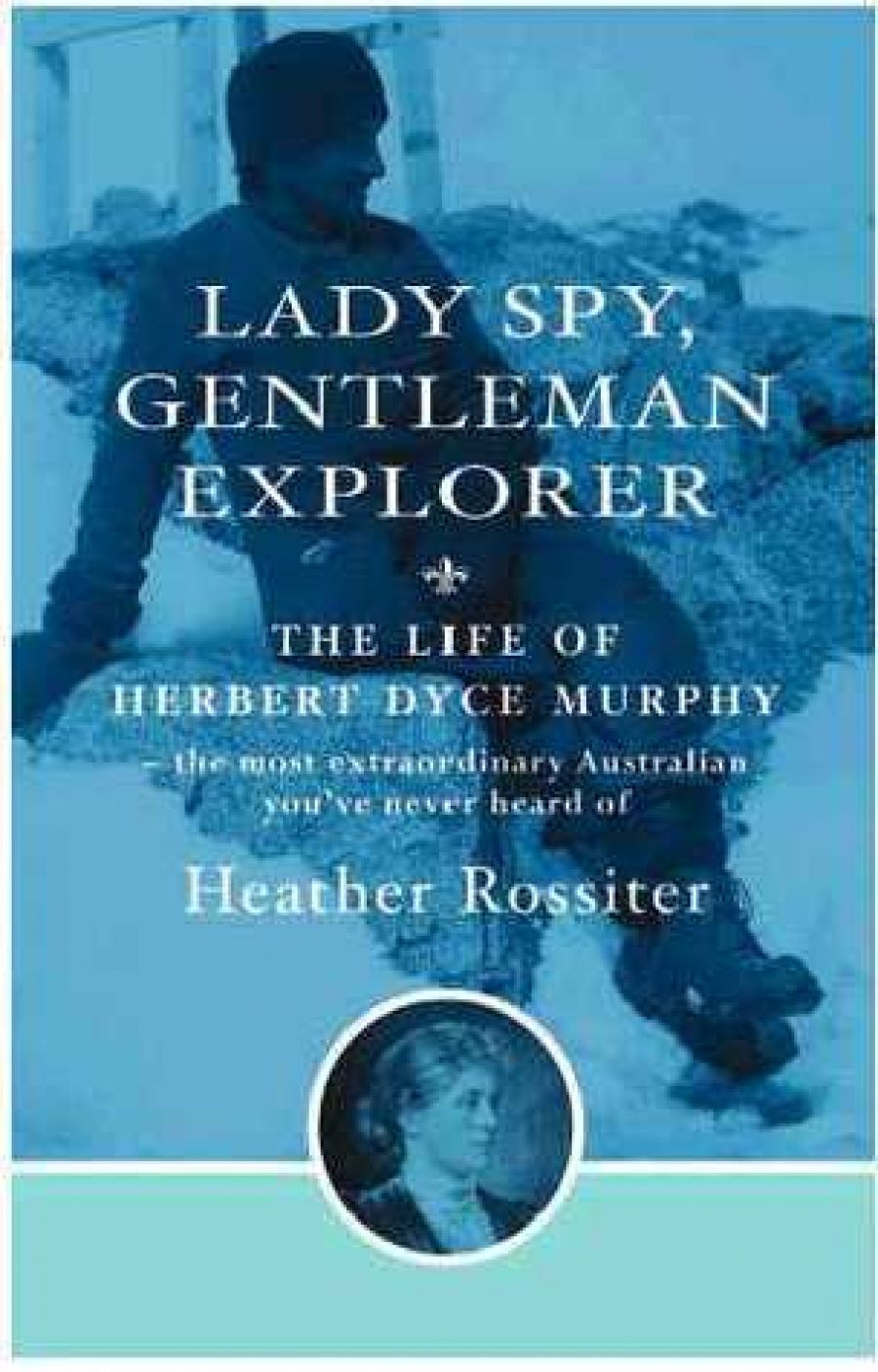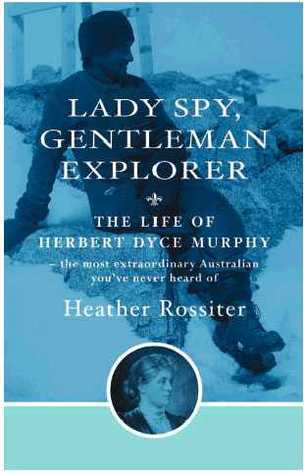
- Free Article: No
- Contents Category: Australian History
- Review Article: Yes
- Article Title: South of Sorento
- Online Only: No
- Custom Highlight Text:
Antarctica feeds the Australian imagination. The two continents are mirror images of each other: dry and largely barren, both managed to elude European description for longer than just about anywhere else. They are yin and yang; hot and cold.
- Book 1 Title: Lady Spy, Gentleman Explorer
- Book 1 Biblio: Random House, $21.95 pb, 401 pp
- Book 1 Cover Small (400 x 600):

- Book 1 Cover (800 x 1200):

Herbert Dyce Murphy lived for ninety-one years, during which time there was hardly a part of the world he did not see. Yet over half of Heather Rossiter’s fascinating new biography of him is given to a period of sixteen months, from November 1911 to March 1913 when, at the age of thirty-two, he was a member of the Australian Antarctic Expedition led by Douglas Mawson.
The other ninety years were not idle. They included hazardous voyages on whaling ships, the adoption of two Norwegian orphan girls, and steaming on the Mississippi. For a year or more, he worked as a British spy, living as a transvestite so he could more easily discover details of European railways and thus facilitate the movement of troops in the event of war. It was during this time that Murphy was surprised to find himself, in drag, sitting next to his mother in church. He passed her a note to identify himself; his mother passed one back saying: ‘I am so glad. I always wanted a beautiful daughter.’ This scene was used by Patrick White, more than seventy-five years later, to provide the exquisite denouement of The Twyborn Affair, a novel that Rossiter has good reason to claim is White’s most significant.
Both Rossiter and Murphy’s earlier biographer, Moira Watson, author of The Spy who Loved Children, go to unnecessary lengths to distance Murphy from White’s Twyborn. They feel the need to assert Murphy’s heterosexuality, but the differences between the fictional character and its historical source are obvious. The similarities are more fascinating. Both Eddie Twyborn and Herbert Dyce Murphy had problems with identity. They moved restlessly from one incarnation to another. Murphy dressed himself in a rich weave of myth and story. He was a legendary raconteur; you get the impression that his material was always sourced in reality but not beholden to it.
Murphy also had problems relating to his father, who expected him to follow him onto the land. With studied nonchalance, Murphy claimed that he joined Mawson’s expedition to find out what was ‘south of the back beach of Sorrento’. Rossiter suggests that he undertook the journey in order to win the esteem of a father who never quite put his son’s career as a transvestite, even if it was in the service of empire, out of his head.
Whatever the reasons, Murphy was selected from a vast field of applicants and became one of the nineteen men who spent the entire winter of 1912 in a small hut at Cape Denison in Commonwealth Bay. In all that time, a blizzard hardly gave them a moment’s quiet. Not even reality television could have devised such a situation. The venue is now known as Mawson’s Hut, a name that adds weight to Rossiter’s contention that the other eighteen men have somehow been written out of the story, both by Mawson himself and by the subsequent creation of popular history. Mawson’s Hut is truly one of Australia’s sacred sites, a monument to the kind of folly that needs to be praised.
It is a pity, in a way, that television didn’t go along for the ride. It’s hard to know what took place in the hut, what kind of tensions and power play took place. Reading Adrian Caesar’s wonderful evocation in The White of the last days of the Antarctic journeys of both Scott and Mawson, you develop a fair sympathy for Mawson, a pragmatist with a strong work ethic but few verbal skills and little imagination. Perhaps it was precisely these qualities that enabled him to survive. But Caesar presents him as an egalitarian who was able, on occasions, to share a joke with his men: ‘He felt fairly confident that most of his fellow expeditioners reacted positively towards him.’
Rossiter, on the other hand, hardly has a good word to say about Mawson. He is presented as a slave-driver, a man with no empathy for human suffering, no understanding of the psychological problems caused by lack of sunlight and isolation, no appreciation of the efforts of his team and, above all else, a man who was prepared to let others risk their lives in order to save his own. Both Caesar and Rossiter extrapolate from terse diary entries and other small pieces of evidence. Perhaps there is no need to adjudicate between these two accounts. Rossiter’s motive is to shed light on Murphy: a man whose bank of stories was enough to fund an entire lonely winter. He was the entertainer of the expedition, a role he continued, for other audiences, well into old age.
There is a fine line between discovery and invention. Lady Spy, Gentleman Explorer suggests how those two experiences, often contrasted, are closer than most of us care to find out or imagine.


Comments powered by CComment